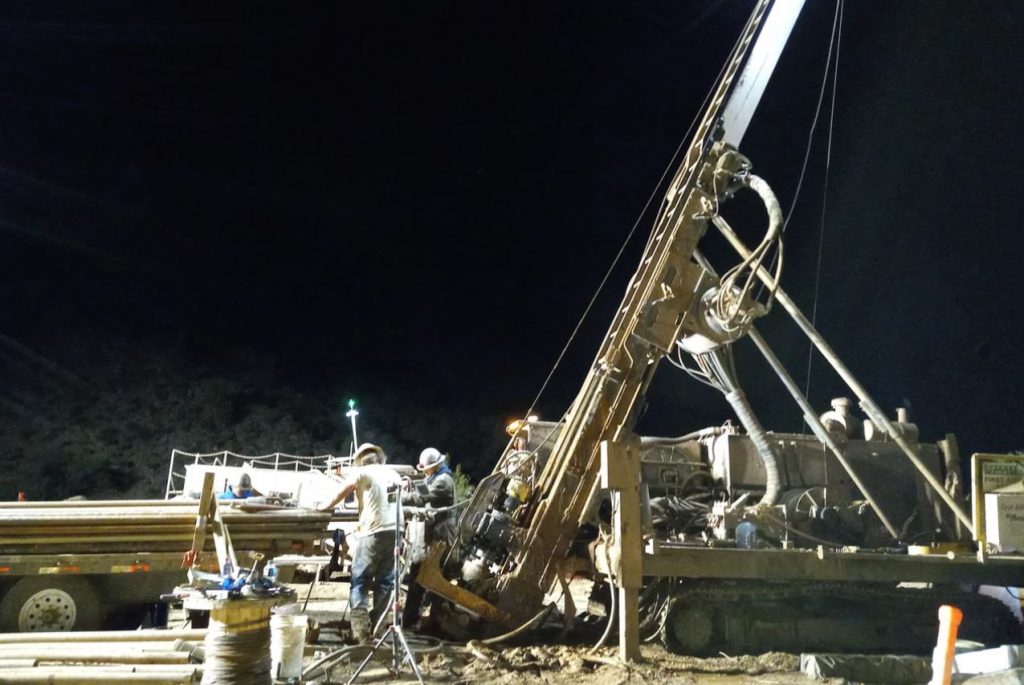Bell Copper drills 0.42% copper 200 metres at Big Sandy, Arizona

Bell Copper Corp. [BCU-TSXV; BCUFF-OTCQB] received complete assay results from drill hole BS-3 at its 100%-owned Big Sandy Project. Big Sandy is a large, truncated porphyry copper-molybdenum target located in northwestern Arizona, approximately 30 km south of the optioned Perseverance Project.
Highlights include inclined drillhole BS-3 that cut 200 metres grading 0.42% copper (8.4 lbsCu/st) and 2.4 g/t silver from 1,302 to 1,502 metres, including 54 meters grading 0.67% copper (13.4 lbsCu/st) and 3.7 g/t silver from 1,445 to 1,499 metres.
BS-3 drilled an additional 524.33 metres from 1,502 to 2,026.33 metres (total depth) grading 0.16% copper and 2.2 g/t silver.
The entire bedrock interval in BS-3, extending 834.33 metres from 1,192 to 2,026.33 metres (total depth), consisted of pervasively sericitized quartz monzonite porphyry typical of the low grade, outer “phyllic” or “QSP” (quartz-sericite-pyrite) alteration zone of a porphyry copper system.
Metallurgical testing continues on the 200-metre chalcocite-bearing interval 1302-1502 meters for copper recovery via routine froth flotation and leaching.
The 200-meter interval in drill hole BS-3 between 1,302 metres and 1,502 metres returned an average grade of 0.42% copper (8.4 lbsCu/st) and 2.4 g/t silver, including 54 metres from 1,445 to 1,499 metres grading 0.67% copper (13.4 lbsCu/st) and 3.7 g/t silver. The true thickness of the 200-metre chalcocite-bearing interval is not known. The maximum copper assay in the interval was 4.30% copper over 0.3 metres. Two other copper assays in the interval exceeded one percent copper, including 2.65% copper over 1.6 metres and 2.12% copper over 0.60 metres.
Tim Marsh, President and CEO, and a Qualified Person as defined by NI43-101, said, “Bell Copper has demonstrated the existence of a new supergene enriched porphyry copper deposit at Big Sandy. We have shown that significant copper grades are present over a length scale of 200 metres, though we lack knowledge of the true thickness in this first intersection. Drilling a half-mile of QSP with little primary geochemical gradient gives us our first clue that this is the large porphyry system that we went looking for. We have not yet found the primary source of the copper, though the veins and minerals in the core all suggest that BS-3 was close. The company is following up the BS-3 intersection with a 900-metre step-out hole, BS-4, from a new drill pad. Precollar drilling and casing into bedrock will be completed with an angle-capable mud rotary drill, which is expected to significantly accelerate the pace of future drilling at Big Sandy.”
